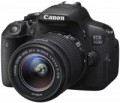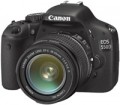DxOMark rating
The result shown by the camera in the DxOMark ranking.
DxOMark is one of the most popular and respected resources for expert camera testing. According to the test results, the camera receives a certain number of points; The more points, the higher the final score.
Total MP
The total number of individual light sensitive dots (pixels) provided in the camera's sensor. Denoted in megapixels - millions of pixels.
The total number of MPs, as a rule, is greater than the number of megapixels from which the frame is directly built (for more details, see "Effective number of MPs"). This is due to the presence of service areas on the matrix. In general, this parameter is more of a reference than practically significant: a larger total number of MPs with the same size and effective resolution means a slightly smaller size of each pixel, and, accordingly, an increased likelihood of noise (especially at high ISO values).
Light sensitivity (ISO)
The sensitivity range of a digital camera matrix. In digital photography, light sensitivity is expressed in the same ISO units as in film photography; however, unlike film, the light sensitivity of the sensor in a digital camera can be changed, which gives you more options for adjusting shooting parameters. High maximum light sensitivity is important if you have to use a lens with a low aperture (see Aperture), as well as when shooting dimly lit scenes and fast-moving objects; in the latter case, high ISO allows you to use low shutter speeds, which minimizes image blur. However, note that with an increase in the value of the applied ISO, the level of noise in the resulting images also increases.
Sensor cleaning
The presence in the camera of a special mechanism for
cleaning the matrix from dust and other contaminants.
This function is found only in models with interchangeable lenses — "reflex cameras" and MILC (see "Camera type"). When replacing the lens in such cameras, the sensor turns out to be open, and the probability of its contamination is quite high; and extraneous particles on the matrix, at best, lead to the appearance of extraneous artifacts, at worst, to damage to the sensor. To avoid this, cleaning systems are provided. They usually work on the principle of ultrasound: high-frequency vibration "resets" debris from the surface of the sensor.
Note that no cleaning system is perfect — in particular, such systems are “too tough” for condensate, salt deposits and other similar contaminants. So the matrix may still need manual cleaning (ideally, in a service centre). Nevertheless, this function allows you to effectively deal with at least dust, which greatly simplifies the life of the user.
Focal length
Focal length of the camera lens.
Focal length is such a distance between the camera matrix and the optical center of the lens, focused at infinity, at which a clear and sharp image is obtained on the matrix. For models with interchangeable lenses (
mirrorless cameras and MILC, see “Camera Type”), this parameter is indicated if the camera is supplied with a lens (“kit”); Let us recall that, if desired, optics with other characteristics can be installed on such a camera.
The longer the focal length, the smaller the viewing angle of the lens, the higher the degree of approximation and the larger the objects visible in the frame. Therefore, this parameter is one of the key for any lens and largely determines its application (specific examples are given below).
Most often in modern digital cameras, lenses with a variable focal length are used: such lenses are able to zoom in and out of the image (for more details, see "Optical Zoom"). For "DSLRs" and MILC, specialized optics with a constant focal length (fixed lenses) are produced. But in digital compacts, "fixes" are used extremely rarely, usually such a lens is a sign of a high-end model with specific characteristics.
It should be borne in mind that the actual focal length of the lens is usually given in the characteristics of the camera. And the viewing angles and the general purpose of the optics are determined not only by this parameter, but also
...by the size of the matrix with which the optics are used. The dependence looks like this: at the same viewing angles, a lens for a larger matrix will have a longer focal length than a lens for a small sensor. Accordingly, only cameras with the same sensor size can be directly compared with each other in terms of lens focal length. However, to facilitate comparisons in the characteristics, the so-called. EGF - focal length in 35 mm equivalent: this is the focal length that a lens for a full frame matrix having the same viewing angles would have. You can compare by EGF lenses for any matrix size. There are formulas that allow you to independently calculate the equivalent of 35 mm, they can be found in special sources.
If we talk about a specific specialization, then the EGF up to 18 mm corresponds to ultra-wide-angle fisheye lenses. Wide-angle is considered "fixed" optics with EGF up to 28 mm, as well as vario lenses with a minimum EGF up to 35 mm. Values up to 60mm correspond to "general purpose" optics, 50 - 135mm are considered optimal for shooting portraits, and higher focal lengths are found in telephoto lenses. More detailed information about the specifics of various focal lengths can be found in special sources.Number of scene programs
The number of scene programs provided in the camera design.
Scene programs are preset settings for some of the most common shooting scenes - for example, Portrait, Landscape, Sports, Sunset, etc. In addition to these presets, this list may include special effects and creative tools (such as color swap or fisheye), as well as exposure modes (see below). The presence of scene programs is especially useful for beginners and non-professional photographers, as it eliminates the need to tinker with each setting separately - just select the most suitable program, and all the necessary settings will be set automatically. The more scene programs the camera design provides, the wider its automatic adjustment capabilities.
Frames per series (JPEG)
The highest number of shots a camera can capture “in one go” in JPEG continuous shooting.
The technical features of modern digital cameras are such that during continuous shooting, photos have to be recorded in a special buffer, and only then, after the end of the series, they can be copied to a memory card. This buffer has a limited size, so the number of frames in one series is also limited. At the same time, we note that this indicator is usually indicated for shooting at the highest possible resolution (see "Maximum image size"); at lower resolutions, the volume of each image is reduced, and the number of frames in the series may turn out to be more than stated in the specifications.
JPEG, the most popular digital photography format today, is smaller and requires less processing power than RAW (see "Recording in RAW Format"). Therefore, in a JPEG series, as a rule, more frames are available to the photographer. However, in some models that have two separate buffers (for RAW and JPEG), it may be the other way around.
File recording formats
File formats in which the camera can record video. Given that the footage is designed to be viewed on an external screen, you should make sure that the playback device (DVD player, media centre, etc.) is able to work with the appropriate formats. At the same time, many camera models themselves can play the role of a player by connecting to a TV via an audio / video output or HDMI (see the corresponding paragraphs of the glossary). And if the video materials are to be viewed on a computer, you should not pay special attention to this parameter at all: problems with format incompatibility in such cases rarely occur, but are usually solved by installing the appropriate codec.
Manual video focus
The ability to
manually focus the camera during video shooting.
This feature is typically found on cameras that support manual focus in photo mode (see "Manual Focus"); however, not all such models are capable of focus manually when shooting video, so this feature is highlighted separately. As in the case of photography, manual focus allows the user to independently choose the object to be focused on, without relying on automation (which quite often does not work the way we would like). This can be useful not only to ensure the overall quality of the material, but also to use original creative techniques.

